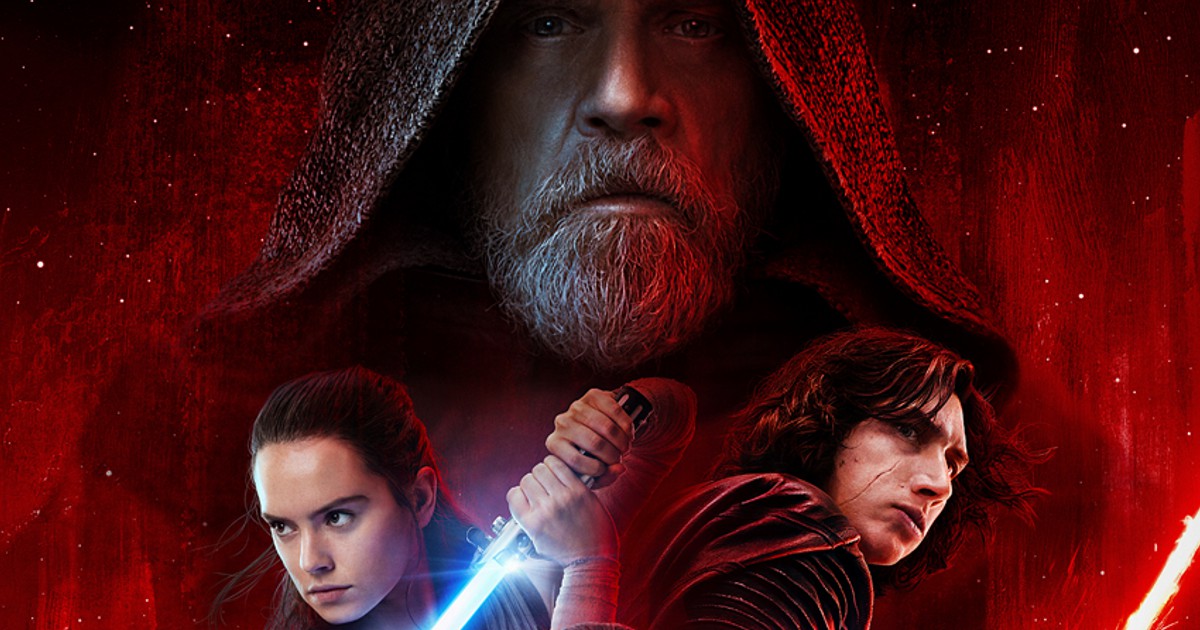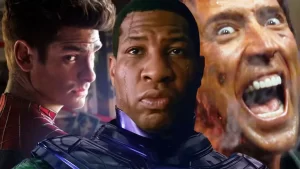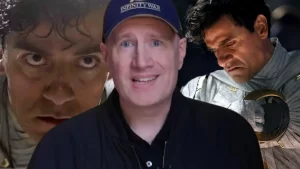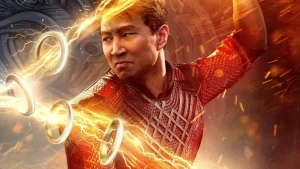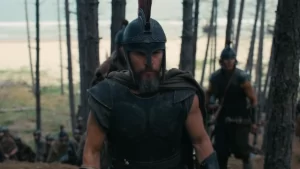The Truths to Which We Claim
A Film Review of Star Wars Episode VIII: The Last Jedi
Rosebud? There is no spoon? Finkle is Einhorn? I am your father? Cinema and “the truth” are partners in a never ending dance of chaos and control that thrust apart to create dramatic conflict and come together to synergize resolution. And yes, the experience depends greatly on our individual points of view. The Last Jedi is the latest episodic entry in a legendary saga that continues to usher in this new generation of space opera with nostalgia, recreation and the basic bullet points that comprise “a Star Wars film.” The objective truth is that this film represents a plausible series of circumstances unfolding within an established and evolving fiction using characters from the past to introduce that which is new. My visceral truth is confusion regarding the significance of the conflict, satisfaction regarding the action and visual effects, indifference to haphazardly developed characters and ultimately, disappointment that the good things at work in this new trilogy cannot overcome the bad of severely disjointed storytelling.
The Last Jedi is a story that refuses to be told. With all the questions that arose with The Force Awakens, a more elusive plot is not what the doctor ordered. An audience will not stand for being torn asunder by random conflict without context for understanding the situation in some general form with at least some answers to previously unaddressed questions. That is, after all, the whole catharsis of bearing witness to a larger than life action/adventure. Granted, Luke Skywalker being a more central figure in this film than the one minute of screen time he was bequeathed in the last does provide us with a functional explanation regarding Kylo Ren’s turn to the dark side. Outside of the creative manner in which this revelation is presented, there is no explanation as to why any of the chasing, running and shooting onscreen is happening other than “bad guys fight good guys.” I still do not know what the hell is going on in this segment of Star Wars, and we are 2/3 into this new trilogy.
Not establishing a solid foundation for the conflict of this new trilogy is a sin committed by The Force Awakens and The Last Jedi continues to pay for it by continuing to ignore it. This film’s intent is moving forward even if it’s from nowhere to nowhere and the primary reasons for this are some of those “things you expect in a Star Wars film” marketing points in the form of new characters, new locations and of course, new aliens. You can’t sell new merchandise without them because let’s be honest, there’s only so many Kylo Ren action figures with variations of grimaced emo expressions on his face that people will purchase. There’s absolutely nothing wrong with merchandising. Introducing new elements to an ongoing fiction is important for growth and variety in story, but the sheer volume of newness within this film borders on distraction and makes The Last Jedi feel less of a sequel and more of a soft reset to this new trilogy.
|
Action Style |
There is a significant upgrade to the action in The Last Jedi vs. its predecessor. Vehicular combat maintains its intensity, blaster firing is solid, but light saber dueling is the true improvement as Disney finally opened the pocket book for some proper choreography. |
5/6 |
|
Action Frame |
Director Rian Johnson and DP Steve Yedlin produce much more active framework than your typical Star Wars film. Plenty of dynamic pushes, pulls, pans and tracking shots are present. This film is certainly intent on evolving the visual style of Star Wars, so don’t be too upset if things like static wipe transitions were one of those things you couldn’t live without. |
4/5 |
|
Lead Performance |
This trilogy is as much Daisy Ridley’s as it is Adam Driver’s for Rey and Kylo Ren with both characters (thankfully) having some growth regarding each other in this film. Both actors demonstrate vulnerability and charisma from their respective perspectives in scenes with each other, but then have a tendency to regressing to two dimensional objects in scenes with other characters. |
4/6 |
|
Supporting Performance |
I love Mark Hamill as an artist, and I know he only has so much input in determining who his character is due to the script and the director, but that is NOT Luke Skywalker. I say that because I see no behavior, presence or demeanor from Yoda or Obi-Wan in this crusty version of the last Jedi Master. It’s as if Luke went to the Harrison Ford school for How to Act Like a Grumpy Old Man in Fiction. John Boyega is criminally underused as Finn is a glorified undercard in this movie. Oscar Isaac’s Poe Dameron has an obvious character arc forming, but not as obvious as his uncharacteristically drab line delivery whenever Poe is showing that he’s learning a lesson onscreen. This film didn’t need Laura Dern as Vice Admiral Holdo, nor did it need the superfluous mystery of Benicio Del Toro’s DJ. Kelly Marie Tran’s Rose is introduced from nowhere because apparently this film needs more characters which is fine because it’s not like Gwendoline Christie’s Captain Phasma was ever going to be used for anything significant at any point in this trilogy. Carrie Fisher’s final performance gives this category its only point as she makes her character matter more than what the text on the page had determined. |
1/5 |
|
Music |
Legendary, powerful, impactful, thematically sound and constantly able to adapt is the musical composition of John Williams. |
6/6 |
|
Sound F/X |
The high standard for audio effects is maintained in this film as new sounds for new aliens provide opportunities for successful experimentation and diversity. |
5/5 |
“Moving” = 20/33
|
Digital F/X |
Absolutely beautiful throughout with some special recognition for the design concepts and animation of the crystal foxes known as the Vulptex. The one exception was the CG for a former Jedi Master. Were they trying to CG a puppet version of him or was the animation just that bad? |
5/6 |
|
Special F/X |
Not as many practical effects used here as was the calling card for the previous film, but still very effective throughout and well integrated with the CG. |
4/5 |
|
Costumes |
An excellent array of design, style and color which I especially enjoyed Snoak’s cloak as well as the red armor of his personal guard in addition to the apparel of the gambling patrons of Star Wars’ second proper casino environment (sorry, EA’s Battlefront 2 has the honor of being the first). |
6/6 |
|
Hair & Makeup |
Very good work being done here as well, most notably regarding the progressively healing scars of Kylo Ren. Although it does seem like Vice Admiral Holdo’s hair color was courtesy of a $5 can of Halloween spray from your local Target. |
4/5 |
|
Exteriors |
Beautiful compositions of real and CG exteriors for both Luke’s secluded island planet as well as the crystalline salt planet where our heroes gather to make a stand in the third act. |
6/6 |
|
Interiors |
You can’t put a price on well dressed sets because if everything within the frame is important enough to be shown, your actors better not be the only things that look good inside. High production value is on display here. |
5/5 |
“Picture” = 30/33
|
Hook |
The entire first film is the true hook to The Last Jedi. Outside of that, the “Resistance” needs Luke back in the fight and overcome whatever is holding him back. A worthy motive by far, but again, one we’ve known since the first film. |
2/4 |
|
Conflict |
I still don’t understand The First Order vs. everyone else and most importantly where the true protagonist, Rey fits into all this. I don’t even understand why Luke has fallen to despair after the film gives me an explanation because it simply does not mesh with what he’s seen and been through in his life. The conflict here has the depth of a Slip ‘N Slide. |
0/4 |
|
Resolution |
Not a chance. An unhappy ending does not mean an unsatisfactory ending and if you need an example, look no further than The Empire Strikes Back. There is little satisfaction to be had in how Luke wraps up his character arc (seeing how there was real potential to be amazing), but no less satisfying than Rey’s lack of growth because according to one Jedi ghost, “she has everything she needs.” What? |
0/4 |
|
Dialogue |
Inconsistent at best. Exchanges between Poe/Holdo and Rose/Finn felt forced and awkward. I didn’t care for the exchange between Luke and a ghost from the past. The reunion of Luke and Leia could have been charged with far more emotional energy than what was delivered. Overall, not fantastic. |
2/6 |
|
Exposition |
As I mentioned in the introduction, the audience gets the details necessary for understanding the Kylo Ren/Luke Skywalker fallout. Generally speaking, we still don’t know where we are or where we are going with our collective of heroes. Every new detail and development is an example of deus-ex-pository. No explanations needed here. |
1/5 |
|
Character Uniqueness |
That sure is a different Luke Skywalker, but it isn’t a “good” different. Rey still shows up and wins which makes her a god? I guess that’s unique, but no different than who she was in the first film. DJ? Been there done that. Snoak? Oh was that a character that was supposed to matter? I guess we can all be thankful that Porgs weren’t elevated to the significance of Ewoks. |
1/6 |
|
Character Relatability |
Still cannot relate to the space deity known as Rey. Complete disconnect from Luke. I can empathize with Poe’s desire to fight with disregard to the cost and with Finn’s desire for revenge. I still can’t put a finger on Kylo Ren’s angsty, teenage aggression other than he’s come to the age when he’s experiencing some changes inside. |
2/5 |
“Story” = 8/34
Overall MPS Rating: 58/100
Star Wars, like Rey, wins because it is what it is. Of course, by “winning” I mean the only thing that matters in business: making money. Losing money is never really a danger for any major IP unless the project at hand truly goes out of its way to mail it in. But if the goal is making as much money as possible, then the concept of quality needs to be reintroduced to how ideas are pitched and caught in the board rooms of Hollywood studios.
The basics of focused storytelling are being woefully neglected. Simply throwing together an amalgam of stuff into the production machine doesn’t actually generate Everlasting Gobstoppers. The Last Jedi’s nature as a Frankenstein’s monster of corporate mass production featuring as many politically correct bullet points to be as sellable to as many demographics as possible for their own sake rather than for the sake of the story is as true as the sun.
The reality is one more episode to this trilogy will not vindicate the shortcomings of its two predecessors. We must accept that this story (however it ends) will not be as grand as a slave turning into a hero whose ambition leads to corruption and galactic strife or as impressive as a farm boy gaining the strength to face impossible odds, save a galaxy and redeem the sins of his father. So far the only idea I get from episodes 7 and 8 is that every once in a while something (or someone) comes along that’s just too big and powerful to be stopped by anything; everything in relation to it is just noise. Is this metaphor for corporate domination the true message these new Star Wars films were meant to be sending?

